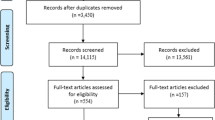Abstract
Goals of work
Although the EuroQol (EQ-5D) is widely used for economic evaluation, it remains unclear whether it can be combined with medical data to predict survival in patients with terminal cancer.
Patients and methods
We carried out this prospective study on 142 terminal cancer patients in four hospice-palliative care units. Association was sought between survival time and a range of variables such as cancer site, performance, previous treatment, age, sex, pain, and EuroQol. The EQ-5D was transformed into the corresponding EQ-5D utility. For univariate analysis, we estimated differences in survival with the Gehan generalized Wilcoxon test. For those variables that were significant, we performed multivariate analysis using the Cox proportional hazard model.
Main results
Univariate analysis showed that sex, age, performance, previous use of chemotherapy, and the EQ-5D utility provided statistically significant prognostic survival information. The median survival time was 13.0 days for the group with an EQ-5D utility score lower than −0.5 and 21.0 days for the group with an EQ-5D utility score above −0.5. In multivariate analysis with the Cox proportional hazard model, an EQ-5D utility score ≤0.5 (RR 1.57, 95% confidence interval 1.06–2.33) was an independent negative predictor of survival.
Conclusions
The EQ-5D quality-of-life assessment tool might be useful for predicting survival time for terminal cancer patients.

Similar content being viewed by others
References
Yun YH, Heo DS, Heo BY, Yoo TW, Bae JM, Ahn SH (2001) Development of terminal cancer prognostic score as an index in terminally ill cancer patients. Oncol Rep 8:795–800
Coates A, Gebski V, Signorini D et al (1992) Prognostic value of quality-of-life scores during chemotherapy for advanced breast cancer. Australian New Zealand Breast Cancer Trials Group. J Clin Oncol 10:1833–1838
Coates AS, Hurny C, Peterson HF et al (2000) Quality-of-life scores predict outcome in metastatic but not early breast cancer. International Breast Cancer Study Group. J Clin Oncol 18:3768–3774
Blazeby JM, Brookes ST, Alderson D (2001) The prognostic value of quality of life scores during treatment for oesophageal cancer. Gut 49:227–230
Earlam S, Glover C, Fordy C et al (1996) Relation between tumor size, quality of life and survival in patients with colorectal liver metastases. J Clin Oncol 14:171–175
Montazeri A, Milroy R, Hole D et al (2001) Quality of life in lung cancer patients: an important prognostic factor. Lung Cancer 31:233–240
Vigano A, Donaldson N, Higginson IJ, Bruera E, Mahmud S, Suarez-Almazor M (2004) Quality of life and survival prediction in terminal cancer patients: a multicenter study. Cancer 101:1090–1098
Tamburini M, Brunelli C, Rosso S, Ventafridda V (1996) Prognostic value of quality of life scores in terminal cancer patients. J Pain Symptom Manage 11:32–41
Kopec JA, Willison KD (2003) A comparative review of four preference-weighted measures of health-related quality of life. J Clin Epidemiol 56:317–325
van den Hout WB, van der Linden YM, Steenland E, Wiggenraad RG, Kievit J, de Haes H, Leer JW (2003) Single- versus multiple-fraction radiotherapy in patients with painful bone metastases: cost-utility analysis based on a randomized trial. J Natl Cancer Inst 95:222–229
Dolan P (1997) Modeling valuations for EuroQol health states. Med Care 35:1095–1108
Blazeby JM (2001) EuroQol: the current state of play. Surg Oncol 10:127–133
Yun YH, Mendoza TR, Heo DS, Yoo T, Heo BY, Park HA, Shin HC, Wang XS, Cleeland CS (2004) Development of a cancer pain assessment tool in Korea: a validation study of a Korean version of the brief pain inventory. Oncology 66:439–444
Glare PA, Eychmueller S, McMahon P (2004) Diagnostic accuracy of the palliative prognostic score in hospitalized patients with advanced cancer. J Clin Oncol 22:4823–4828. Erratum in: J Clin Oncol. 2005;23:248
Maltoni M, Pirovano M, Scarpi E, Marinari M, Indelli M, Arnoldi E, Gallucci M, Frontini L, Piva L, Amadori D (1995) Prediction of survival of patients terminally ill with cancer. Results of an Italian prospective multicentric study. Cancer 75:2613–2622
Acknowledgements
This work was supported by National Cancer Center Grant N0110020-3.
Author information
Authors and Affiliations
Corresponding author
Rights and permissions
About this article
Cite this article
Park, S.M., Park, M.H., Won, J.H. et al. EuroQol and survival prediction in terminal cancer patients: a multicenter prospective study in hospice-palliative care units. Support Care Cancer 14, 329–333 (2006). https://doi.org/10.1007/s00520-005-0889-1
Received:
Accepted:
Published:
Issue Date:
DOI: https://doi.org/10.1007/s00520-005-0889-1




